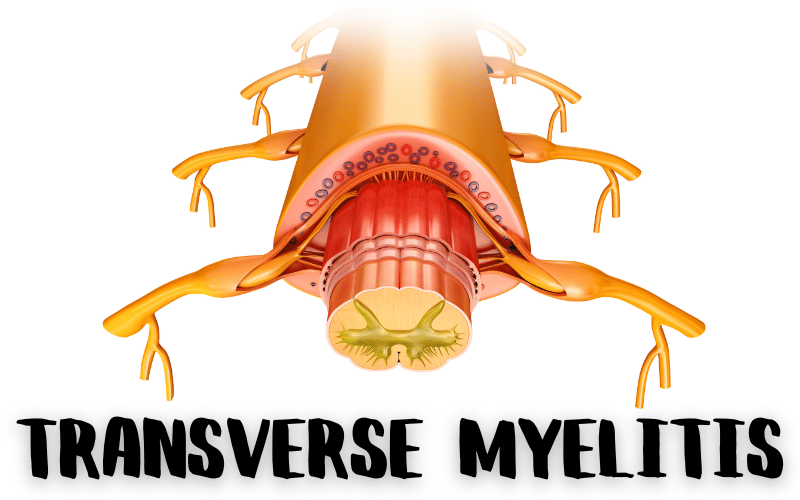Introduction: Navigating the Labyrinth of Transverse Myelitis

In the broad canvas of medical science, certain conditions stand out for their distinct characteristics, and Transverse Myelitis is one such disorder. An enigma wrapped in scientific jargon, this condition takes us deep into the realm of neurology. An understanding of Transverse Myelitis isn’t merely an academic pursuit; it’s a beacon of hope for thousands of lives it impacts, their friends, and families.
On a fundamental level, Transverse Myelitis is an inflammatory disorder involving the spinal cord. The inflammation targets both sides of a particular section of the spinal cord, damaging myelin, the protective layer over nerve cell fibers. This disruption in the nervous system brings about a wide range of symptoms that can be, at best, uncomfortable and, at worst, severely debilitating.
This condition’s rarity might make it seem distant and abstract. Still, with an estimated 1,400 to 2,800 new cases each year in the United States alone, Transverse Myelitis’ impact is undeniable. The repercussions of this disease are far-reaching, altering the course of lives in unexpected ways. However, with the right information and support, the journey becomes manageable.
Diving into the labyrinth of Transverse Myelitis may seem daunting. However, every exploration starts with a single step. In this article, we take that step together. We unravel this complex neurological condition, one fact at a time, aiming to provide you with insights that can help navigate the intricacies of Transverse Myelitis.
Though shrouded in scientific complexity, Transverse Myelitis needs to be understood by those it affects and those around them. To that end, we present the 15 must-know facts about Transverse Myelitis. Let’s start this enlightening journey.
1. A Closer Look at the Rarity of Transverse Myelitis

Transverse Myelitis is often termed a ‘rare disease,’ but what does that mean? The classification of ‘rare diseases’ is usually attributed to conditions affecting fewer than 200,000 people at any given time in a country. With Transverse Myelitis affecting between 1,400 and 2,800 new patients each year in the United States, it falls well within this definition.
But why does the rarity of a disease matter? The answer lies in the recognition and resources dedicated to such conditions. Often, rare diseases face a lack of comprehensive research, resulting in gaps in understanding and treatment approaches. The rarity of Transverse Myelitis thus emphasizes the need for dedicated research to improve disease management and patient outcomes.
Furthermore, the low incidence rates of Transverse Myelitis often lead to a delay in diagnosis. It’s not uncommon for patients to visit multiple healthcare facilities before receiving the correct diagnosis, primarily due to the unfamiliarity of many healthcare professionals with the condition.
The lack of awareness around rare diseases like Transverse Myelitis is a significant hurdle for patients, caregivers, and even healthcare providers. It’s not just about numbers; the tag of a ‘rare disease’ comes with a unique set of challenges, including delays in diagnosis, limited treatment options, and lack of understanding, even in medical circles. (1)